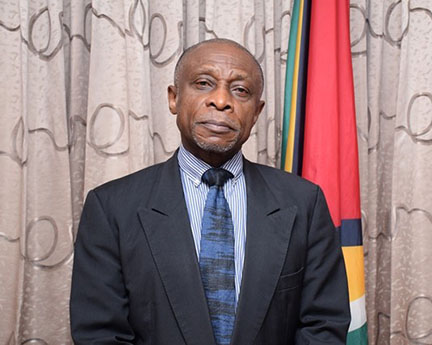A roadmap that seeks to improve Guyana’s trade-related systems was officially launched yesterday with officials underscoring that its implementation would make Guyana a more attractive destination for foreign direct investment.
According to Foreign Secretary Carl Greenidge, implementation of key trade facilitation reforms as outlined in the Trade Facilitation Roadmap 2019-2024 would reduce trade processing time by 50 per cent and related transaction costs by 30 per cent by the end of 2024, which would lead to the enhancement of Guyana’s ease in doing business.
The National Committee on Trade Facilitation (NCTF) yesterday launched the roadmap which also represents a bid by Guyana to meet its international obligations under the Trade Facilitation Agreement (TFA) promulgated by the World Trade Organisation (WTO). The TFA was ratified by Guyana in 2015 and it entered into force in 2017.
According to the WTO, the TFA contains myriad provisions which seek to expedite the movement, release and clearance of goods, including goods in transit, while setting out measures for effective cooperation between customs and other appropriate authorities of trade facilitation and customs compliance issues.
Presenting the roadmap, which has been several years in the making, during a press conference yesterday was Bevon McDonald, Senior Foreign Service Officer I in the Foreign Trade Department of the Ministry of Foreign Affairs. McDonald explained that the roadmap aims to, among other things, reduce red tape, and with it, the costs and time associated with clearing goods, while providing assistance to all stakeholders on issues related to international trade, in keeping with the requirements of the TFA.
Terrence Leonard, Programme Manager at the United Nations Conference on Trade and Development (UNCTAD), said that there was some resistance to change experienced while developing the roadmap. With respect to the role of government in the process, he said, “government is a facilitator of trade, and it is important that (it) engage the private sector in legislative and other reforms at every single stage to help them to understand their own concerns regarding the supply chain.”
Features of the roadmap include mechanisms allowing for smoother clearance and release of goods at Guyana’s ports, including a reduction in the amount of time required for imports and exports. It also involves measures for cooperation between customs, border agencies, immigration, and customs brokers.
There is also an emphasis on technical assistance and capacity building of private and public stakeholders at all levels in Guyana’s exportation and importation chains, as well as knowledge sharing.
Both McDonald and Greenidge, who gave the feature address, are optimistic that the changes contained in the roadmap are likely to make Guyana a more attractive destination for foreign direct investment, especially in light of the existing attractiveness resulting from Guyana’s oil finds.
McDonald observed that despite their efforts so far, work required included reform of several pieces of unspecified legislation, continued provision of subventions to the NCTF by government, support for capacity building in the public and private sectors, and continued engagement of the NCTF as it continues to work to ensure that Guyana meets its international obligations.
She cautioned that if Guyana fails to successfully implement the roadmap, it faces a real risk of defaulting in meeting its obligations under the TFA, and facilitating the perpetuation of high transactions costs. In such a context, there is unlikely to be any improvements in perceptions about Guyana as a foreign investment destination, she said.
The NCTF comprises of members from across several sectors involved in various aspects of Guyana’s international trade. It is chaired by the Guyana Revenue Authority.
In addition to the abovementioned provisions, the roadmap requires the implementation of an electronic window, and e-payment capabilities, all of which are slated to come on stream in due course of the roadmap’s implementation.










